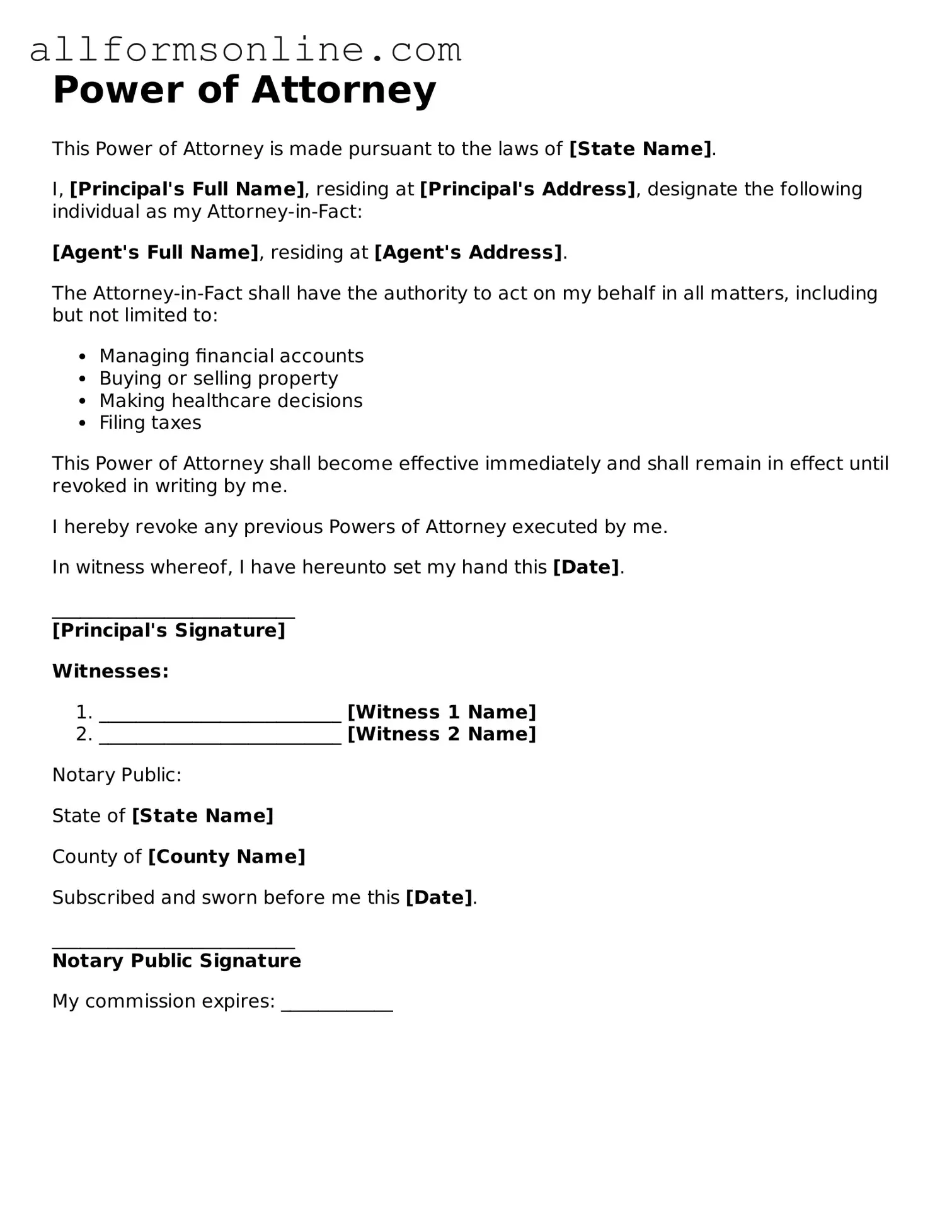What is a Power of Attorney (POA)?
A Power of Attorney is a legal document that allows one person to act on behalf of another in legal or financial matters. The person who grants this authority is called the principal, while the person receiving it is known as the agent or attorney-in-fact. This arrangement can be useful when the principal is unable to make decisions due to illness, absence, or other reasons.
What are the different types of Power of Attorney?
There are several types of Power of Attorney, including general, durable, and limited. A general POA grants broad powers to the agent, allowing them to handle a wide range of matters. A durable POA remains in effect even if the principal becomes incapacitated. A limited POA restricts the agent's authority to specific tasks or time periods, making it ideal for particular situations.
How do I choose an agent for my Power of Attorney?
Selecting an agent is a critical decision. Choose someone you trust completely, as they will have significant control over your financial and legal matters. Consider their ability to handle responsibilities and their understanding of your wishes. It's also wise to discuss your decision with the potential agent to ensure they are willing and able to take on this role.
Do I need a lawyer to create a Power of Attorney?
While it's not strictly necessary to have a lawyer draft your Power of Attorney, consulting one can be beneficial. A lawyer can ensure that the document meets all legal requirements and accurately reflects your intentions. If your situation is complex, or if you have concerns about potential disputes, seeking legal advice is a smart choice.
Can I revoke a Power of Attorney?
Yes, you can revoke a Power of Attorney at any time, as long as you are mentally competent. To do so, you should create a written revocation document and notify your agent and any relevant institutions. It’s also advisable to destroy any copies of the original POA to prevent confusion.
